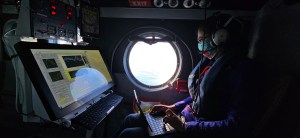Did you ever notice how the air can seem cooler when you enter a forest? Humans aren’t the only living things that sweat to cool off. When trees and plants “sweat,” they cool themselves andcan cool the surrounding air.Through a process called transpiration,water and nutrients are taken up by plant roots from soil and delivered to the stem and leaves as part of photosynthesis. Some of the water drawn up through the roots exits the plant through pores – or stomata—in its leaves, hence the sweating.As this ”sweat” evaporates, heat is removed from the air, providing a cooling effect. However, if there isn’t enough water available or if relative humidity gets too high, the stomata close. The plant heats up, ceases to grow, and can eventually die.
Healthy plants provide a number of ecosystem services to humans including food, recreation, and building materials. Plants also impact Earth's global water and carboncycles, with plant transpiration accounting for around 10 percent of the moisture in our atmosphere. A new NASA mission called ECOSTRESS – short for ECOsystem Spaceborne Thermal Radiometer Experiment on Space Station, was successfully launched to the International Space Station on June 29th, 2018. ECOSTRESS will literally study how plants sweat, providing themost detailed measurements of plant temperatures available from space and helping researchers monitor the health of Earth’s vegetation.
“Your temperature is one of the first things a doctor wants to know when you go for a checkup,” says Simon Hook, ECOSTRESS Principal Investigator from NASA’s Jet Propulsion Laboratory. “It tells your doctor a lot about your condition. Temperature is an extremely useful indicator for plants too.”
“Temperature data can indicate if a plant is stressed and needs more water before the plant collapses, providing an early warning of a possible drought” explains Hook. “ECOSTRESS will be able to measure plant temperatures – and therefore plant health – over areas as small as an individual field of crops.”
The International Space Station is well-suited for the ECOSTRESS mission.
Hook says, “Most Earth observing satellites are in a Sun-synchronous orbit, so they pass over an area at the same time each day, providing us a daily snapshot of that area. Because of the space station’s orbit, ECOSTRESS sees the same spot on Earth every few days at different times of day so it can track changes throughout a typical day.”
If, during a hot, dry afternoon, plants stop releasing water to conserve supplies, ECOSTRESS will “see” a change in temperature compared with previous measurements of the same area. It will detect these kinds of responses in farmer’s fields and other ecosystems. Data acquired from ECOSTRESS may, in time, help farmers develop crop watering protocols, give researchers a clearer understanding of the effects of drought, and assist water resource managers in planning effective water use.Its data could also reveal the effects of droughts on natural vegetation; for example, to help identify vulnerable types of trees. Forest managers and ecologists will be able to use this information to make better-informed decisions.
But that’s not all.
“ECOSTRESS temperature data will be useful in a whole host of ways,” says Hook. “We’ll be able to use the same techniques developed to extract plant temperature to look at other phenomena such as the temperature of volcanoes, urban heat waves, wildfires, coastal currents, lakes, and more. That’s a whole story in itself.”
Want to learn more about this cool mission? No sweat! Just visit science.nasa.gov.






























